
Royal Naval Air Station Lee-on-Solent,, is a former Royal Naval Air Station located near Lee-on-the-Solent in Hampshire, approximately 4 miles (6.44 km) west of Portsmouth, on the coast of the Solent.

737 Naval Air Squadron was a Naval Air Squadron of the Royal Navy's Fleet Air Arm. It was initially active during 1943 as an amphibious Bomber Reconnaissance Training Squadron. Reactivated in 1944 it operated as an ASV Training Unit until 1945. It was active again between 1949 and 1957. From 1959 it was the Anti-Submarine Warfare school at RNAS Portland. It operated Westland Wessex HAS.3 rescue helicopters from their land base at RNAS Portland, Dorset.
735 Naval Air Squadron was a Naval Air Squadron of the Royal Navy's Fleet Air Arm. It was active from 1943 as an ASV Radar Training Unit. Forming at HMS Nightjar, at RNAS Inskip, Lancashire, in 1944 the squadron moved to HMS Ringtail, RNAS Burscough, also in Lancashire. Various flights from the squadron moved on to form other Naval Air Squadrons, with the squadron eventually disbanding in 1946.
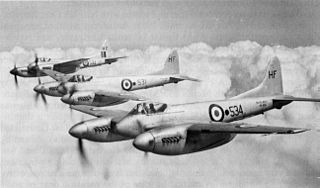
739 Naval Air Squadron was a Naval Air Squadron of the Royal Navy's Fleet Air Arm, which disbanded during 1950. It was formed as the Blind Approach Development Unit for the Fleet Air Arm, operating with Fairey Fulmar and Fairey Swordfish aircraft, at RNAS Lee-on-Solent, in 1942. Just under one year later the squadron moved to RNAS Worthy Down, in late 1943 and continued in the role. Roughly one year later the squadron moved again, relocating to RNAS Donibristle in late 1944, disbanding in 1945. It reformed in 1947 and was based at RNAS Culham, with a new role, as the Fleet Air Arm Photographic Trials and Development Unit.
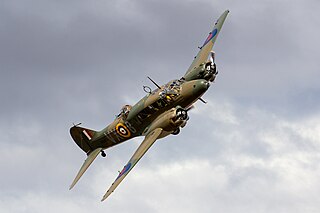
747 Naval Air Squadron was a Naval Air Squadron of the Royal Navy's Fleet Air Arm which last disbanded in December 1945. 747 Naval Air Squadron was part of the Torpedo Bomber Reconnaissance Pool and formed at HMS Owl, RNAS Fearn, in March 1943, evolving into an Operational Training Unit. July saw the squadron move to HMS Nightjar, RNAS Inskip and became part of No. 1 Naval Operational Training Unit. It returned to HMS Owl in January 1944 and then to HMS Urley, RNAS Ronaldsway, in July. In November 1945 the squadron headquarters moved to HMS Jackdaw, RNAS Crail, leaving a Flight at HMS Urley.

753 Naval Air Squadron was a Naval Air Squadron of the Royal Navy's Fleet Air Arm. It was active as an Observer Training Squadron from 1939 to 1946 as part of No. 2 Observer School, forming out of the School of Naval Co-operation RAF, in May 1939. Initially at RNAS Lee-on-Solent, the squadron moved to RNAS Arbroath just over one year later in August 1940, following a German bombing attack on the air station. It spent four years operating out of Arbroath, before relocating again, this time to RNAS Rattray, where the squadron disbanded in August 1946.
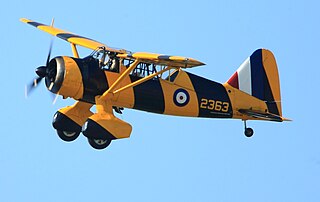
754 Naval Air Squadron was a Naval Air Squadron of the Royal Navy's Fleet Air Arm. It was active as an Observer Training Squadron from 1939 to 1944 as part of No. 2 Observer School, forming out of the School of Naval Co-operation RAF, in May 1939. It initially operated out of HMS Daedalus, RNAS Lee-on-Solent, Hampshire, however, after the Naval Air Station was attacked and bombed, it then moved to north to HMS Condor, RNAS Arbroath, Angus, Scotland, in September 1940. Here, it provided training for Observers and also Air Gunners and where four years later, in March 1944, it disbanded. The squadron then briefly reformed as a Air Gunner Training Squadron, as part of No. 1 Naval Air Gunners School, when 744 Naval Air Squadron was re-designated 754 Naval Air Squadron, in June 1944, at RN Air Section Yarmouth, Nova Scotia, Canada, until disbanding again, in March 1945.
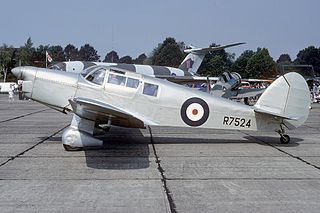
756 Naval Air Squadron was a Naval Air Squadron of the Royal Navy's Fleet Air Arm. It was initially formed as a Telegraphist Air Gunner Training Squadron, operating from May to August 1939, out of RNAS Worthy Down, in Hampshire, England. It was later reformed again as a Telegraphist Air Gunner Training Squadron, operating from March 1941, out of RNAS Worthy Down. TAG training was provided until the No. 2 School was ready in Canada, opening on 1 January 1943, and 756 Naval Air Squadron disbanded in December 1942. The squadron reformed at RNAS Katukurunda, in Sri Lanka, in October 1943, as a Torpedo, Bomber, Reconnaissance pool. During 1944 and 1945, the squadron undertook a number of detachmemts on different types of Royal Navy aircraft carriers, then disbanding in December 1945.

760 Naval Air Squadron is a Naval Air Squadron of the Royal Navy's Fleet Air Arm. The squadron first formed in April 1940 as No.1 Fleet Fighter Pool with a variety of aircraft types before standardising in 1941 on the Hawker Sea Hurricane. In this role it disbanded in December 1942. In May 1944 760 NAS briefly reformed as an Anti-Submarine Operational Training Squadron before disbanding into 766 Naval Air Squadron in November. Reformed again as part of No.1 Naval Air Fighter School in April 1945 it converted fighter pilots to the Vought Corsair and then the Supermarine Seafire until 23 January 1946 when it disbanded.
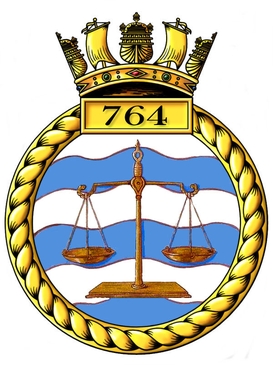
764 Naval Air Squadron was a Naval Air Squadron of the Royal Navy's Fleet Air Arm. It initially formed in April 1940, at HMS Daedalus, RNAS Lee-on-Solent, as an Advance Seaplane Training Squadron. The Squadron moved to RAF Pembroke Dock in July 1940, and later to HMS Daedalus II, RNAS Lawrenny Ferry in October 1941 and remaining there until the Squadron disbanded in November 1943. It reformed at HMS Siskin, RNAS Gosport, in February 1944, as the User Trials Unit, however, the squadron was decommissioned for the second time in September 1945. 764 Naval Air Squadron reformed again, at HMS Fulmar, RNAS Lossiemouth, in May 1953, where it became an Advanced Training Unit. It moved to HMS Heron, RNAS Yeovilton, in September 1953, where it received its first jet aircraft. In November 1954 the Squadron disbanded.

765 Naval Air Squadron was a Naval Air Squadron of the Royal Navy's Fleet Air Arm. It formed at RNAS Lee-on-Solent, in May 1939, as a Seaplane School and Pool squadron. The squadron moved to RNAS Sandbanks, in August 1940, where it undertook the Seaplane Flying Training Course Part I. Lieutenant Commander J.B. Wilson was appointed as dual officer in charge of the air base, and Commanding officer of 765 NAS. By the middle of 1943, dedicated Seaplane Training schools ended and the squadron disbanded in the October. 765 NAS reformed at RNAS Charlton Horethorne, in early February 1944, as a Travelling Recording Unit. The squadron moved to RNAS Lee-on-Solent in March, before moving to RNAS Worthy Down on one month later during April, then in May it moved to RNAS Stretton, were it remained during June.

766 Naval Air Squadron was a Naval Air Squadron of the Royal Navy's Fleet Air Arm. It was to have initially formed in 1939 at HMS Daedalus, RNAS Lee-on-Solent, as a Seaplane School, however, it formed at HMS Landrail, RNAS Machrihannish, as a Night ALT Course, in 1942. It moved to HMS Nightjar, RNAS Inskip, in 1943, to become part of No. 1 Naval Operational Training Unit. By 1944, it was operating over 30 Swordfish aircraft, but, during the year, also acquired Firefly aircraft from 1772 NAS, and Sea Hurricane aircraft from 760 NAS. It moved to HMS Merganser, RNAS Rattray, early in 1946, but later that year, moved to HMS Fulmar, RNAS Lossiemouth, where it received Seafire aircraft, along with being Part 1 of the Operational Flying School. By late 1951, Sea Fury trainer aircraft were also added to its varied list of types operated. In 1953, the squadron moved to HMS Seahawk, RNAS Culdrose, where it disbanded in 1954.

770 Naval Air Squadron was a Naval Air Squadron of the Royal Navy's Fleet Air Arm. It last disbanded at HMS Nighthawk, RNAS Drem in October 1945. 770 Naval Air Squadron initially formed as a Deck Landing Training Squadron at HMS Daedalus, RNAS Lee-on-Solent, in November 1939. Embarked in HMS Argus, and operated from the aircraft carrier and Hyeres la Palyvestre in the south of France, until it disbanded in May 1940. It reformed at HMS Merlin, RNAS Donibristle, on New Year’s Day 1941, as a Fleet Requirements Unit out of 771 Naval Air Squadron’s 'X' Flight. It moved to HMS Jackdaw, RNAS Crail, in June 1941, then two and half years later it moved to HMS Jackdaw II, RNAS Dunino in January 1944, before finally moving to HMS Nighthawk in July.

772 Naval Air Squadron was a Naval Air Squadron of the Royal Navy's Fleet Air Arm which last disbanded during September 1995. 772 Naval Air Squadron formed as a Fleet Requirements Unit out of 'Y' Flight from 771 Naval Air Squadron at RNAS Lee-on-Solent in September 1939. While the headquarters remained there, floatplanes were operated out of RNAS Portland, however, mid 1940 saw the whole squadron move north to RNAS Campbeltown and roughly twelve months afterwards the short distance to RNAS Machrihanish. The unit moved to RNAS Ayr in July 1944 and became the Fleet Requirements Unit School. In January 1946 the squadron moved to RNAS Burscough in Lancashire, before moving to RNAS Anthorn in Cumberland, in May. It became the Northern Fleet Requirements Unit upon moving to RNAS Arbroath, in June 1947, but disbanded into 771 Naval Air Squadron in October. 772 Naval Air Squadron reformed as a Helicopter Support Squadron at RNAS Portland in September 1974. In September 1977 the squadron took over responsibility for a number of Ships' Flights of Royal Fleet Auxiliary ships. The squadron was used to reform 848 Naval Air Squadron for the Falklands Task Force in 1982, with the Ships' Flights absorbed into 847 Naval Air Squadron. In August 1982 it took on the Anti-Submarine Warfare Flight from 737 Naval Air Squadron and between 1983 - 1985 a Search and Rescue Flight operated out of RNAS Lee-on-Solent.

774 Naval Air Squadron was a Naval Air Squadron of the Royal Navy's Fleet Air Arm which last disbanded in August 1945. 774 Naval Air Squadron formed at HMS Kestrel, RNAS Worthy Down, in November 1939 as an Armament Training Squadron for Observers and TAGs. Aircraft were assigned from storage and a couple of other naval air squadrons. It moved a week later to RAF Aldergrove, and was attached to No.3 Bombing and Gunnery School. In July 1940 it moved to HMS Fieldfare, RNAS Evanton, and then in September to HMS Vulture, RNAS St Merryn, Throughout the next few years, the older aircraft were withdrawn and replaced with newer types and variants. 774 NAS moved to HMS Merganser, RNAS Rattray in October 1944, where it became a target-towing unit.

776 Naval Air Squadron was a Naval Air Squadron of the Royal Navy's Fleet Air Arm which last disbanded at the end of October 1945. 776 Naval Air Squadron formed as a Fleet Requirements Unit at HMS Daedalus, RNAS Lee-on-Solent, at the start of 1941. It operated a detachment at RN Air Section Speke in 1941 and one at RAF Woodvale in 1942, with the squadron wholly moving to Speke in the October. 1943 saw further detachments and these were deployed at RAF Llanbedr, RAF Millom, RAF Usworth and RAF Waltham. In April 1945, the Woodvale detachment was reabsorbed into the squadron when it relocated there, the airbase now operated by the Admiralty and known as HMS Ringtail II. It moved to HMS Ringtail, RNAS, Burscough, at the start of October 1945.

777 Naval Air Squadron was a Naval Air Squadron of the Royal Navy's Fleet Air Arm, which formed as a Fleet Requirements Unit in West Africa during the Second World War. Throughout most of 1943, the squadron was responsible for the air defence of Sierra Leone. It disbanded at HMS Spurwing, RNAS Hastings, Sierra Leone, during December 1944. The squadron reformed in May 1945, from 'B' Flight of 778 Naval Air Squadron, as a Carrier Trials Unit operating aboard HMS Pretoria Castle, and using shore bases at HMS Siskin, RNAS Gosport, and HMS Peregrine, RNAS Ford in England, and HMS Wagtail, RNAS Ayr, in Scotland. 777 Naval Air Squadron number was assigned to the aircraft collection at the Fleet Air Arm Museum in April 2006.

780 Naval Air Squadron was a Naval Air Squadron of the Royal Navy's Fleet Air Arm which last disbanded at HMS Seahawk, RNAS Culdrose in November 1949. 780 Naval Air Squadron formed at HMS Raven, RNAS Eastleigh as a Conversion Course Unit, in October 1939, to train experienced civilian pilots in naval flying. It moved to HMS Daedalus, RNAS Lee-on-Solent, in October 1940, and later, its role had changed to converting pilots to Fairey Barracuda aircraft. It spent a year at RNAS Charlton Horethorne, before returning to HMS Daedalus and disbanded, early 1945. In March 1946, the squadron reformed at HMS Godwit, RNAS Hinstock, as the Naval Advanced Flying School, to give flying instructors' courses, and later provided Instrument Flying Training. In December, the squadron moved to HMS Jackdaw, RNAS Crail, then in March 1947 moved to HMS Merlin, RNAS Donibristle, and in May to HMS Seahawk as the first resident unit.

783 Naval Air Squadron was a Naval Air Squadron of the Royal Navy's Fleet Air Arm which last disbanded in November 1949. 783 Naval Air Squadron was formed as an ASV Training Squadron at HMS Condor, RNAS Arbroath, Scotland, in January 1941. It operated a number of ‘flying classroom’ aircraft alongside other types. It operated in conjunction with the Naval Air Signals School (NASS) from March 1943. The squadron moved to HMS Daedalus, RNAS Lee-on-Solent, England, when the NASS moved south, also supporting the Flag Officer, Air, Home Communications Officer and from July 1948,it was part of the 51st Miscellaneous Air Group.

787 Naval Air Squadron was a Naval Air Squadron of the Royal Navy's Fleet Air Arm which disbanded in January 1956. It formed in March 1941, at HMS Heron, RNAS Yeovilton, out of 804 Naval Air Squadron as a Fleet Fighter Development Unit. Almost every type of fighter was received by the squadron for testing and evaluation for naval use. A move to RAF Duxford in June 1941 saw it become the Naval Air Fighting Development Unit, attached to the Royal Air Force's Air Fighting Development Unit. The squadron undertook rocket projectile test, continuous development of fighter tactics and even helping Torpedo Bomber Reconnaissance squadrons in evading fighter attack. Post Second World War it continued its trials task and also undertook Rebecca radar trials and ASH, US-built air-to-surface-vessel radar trials.























